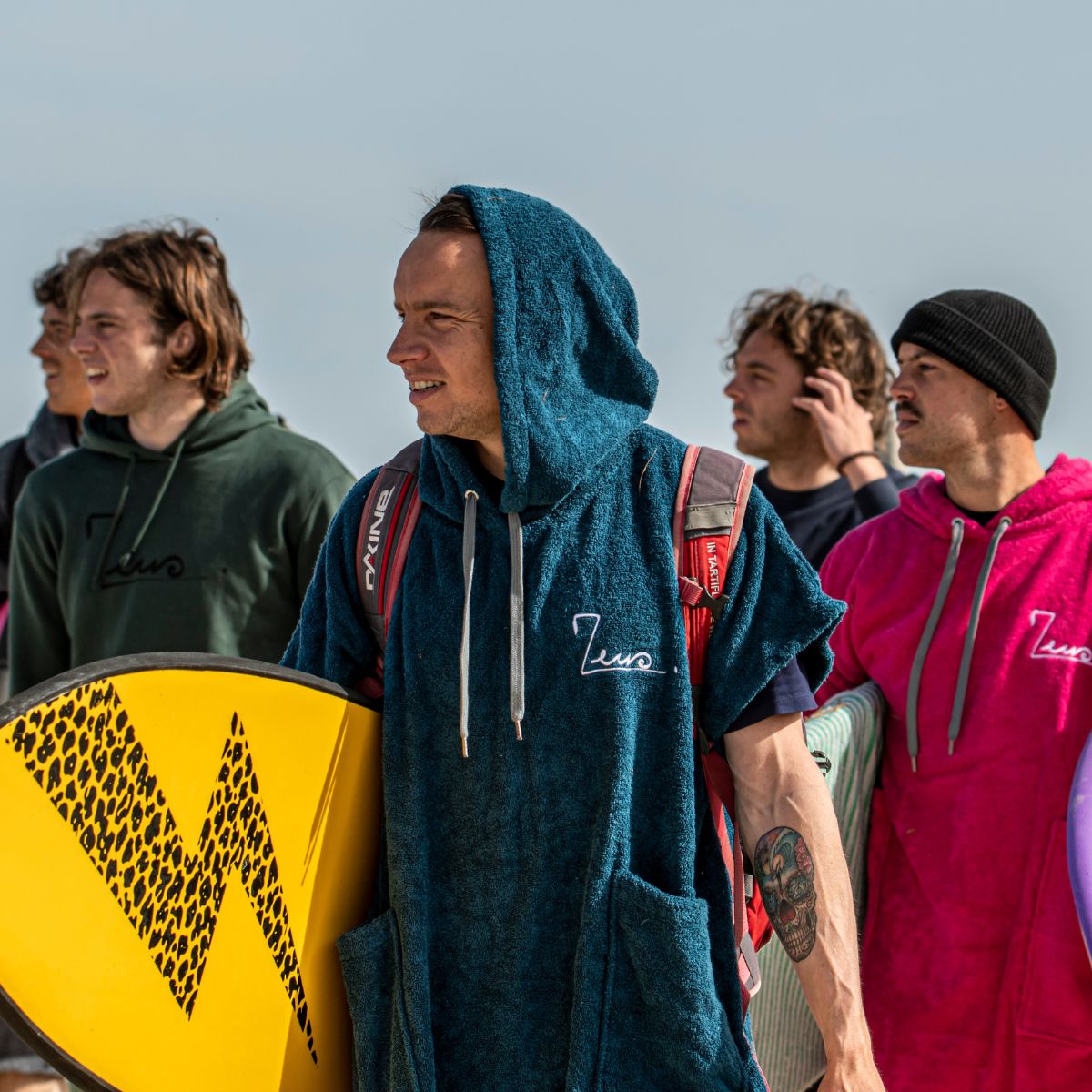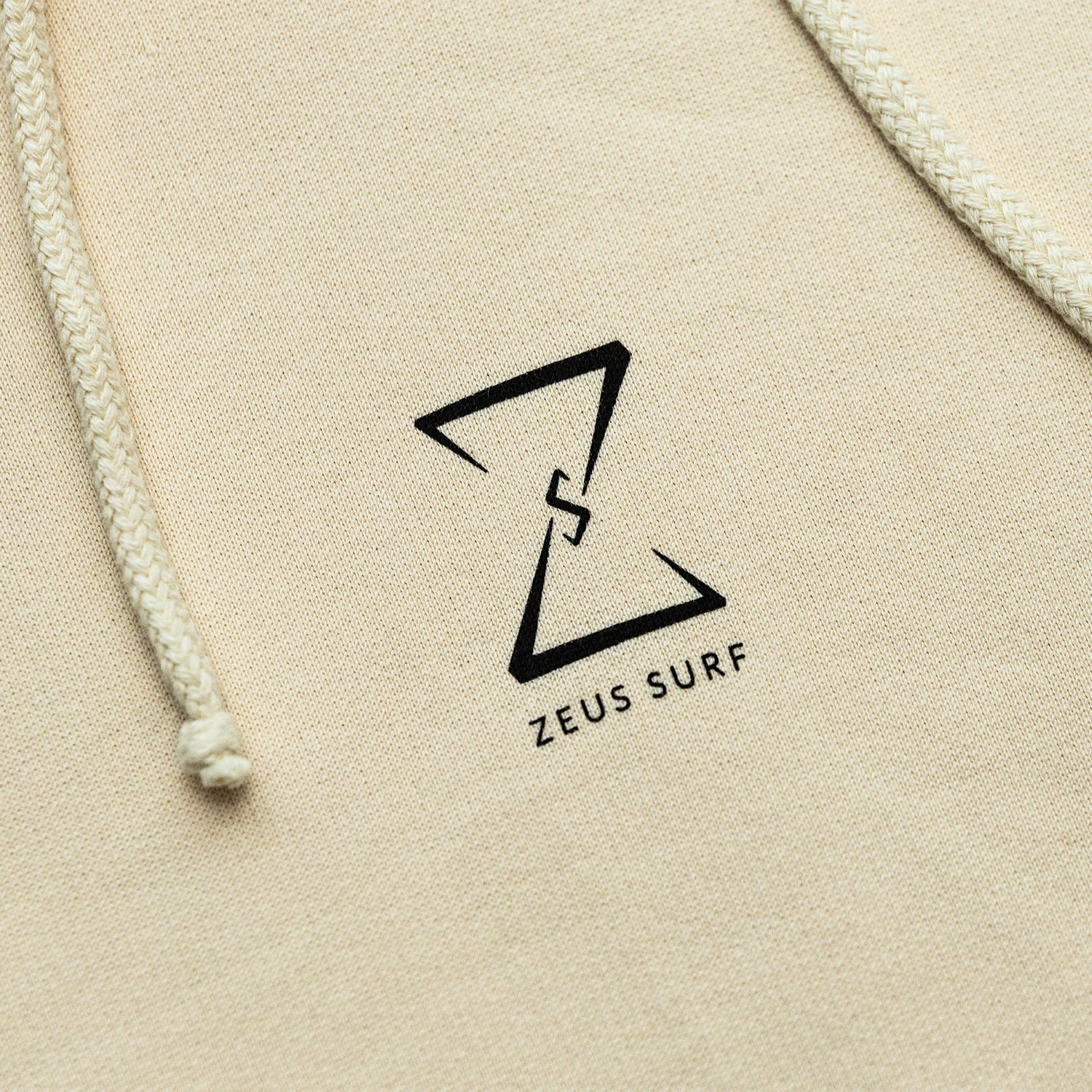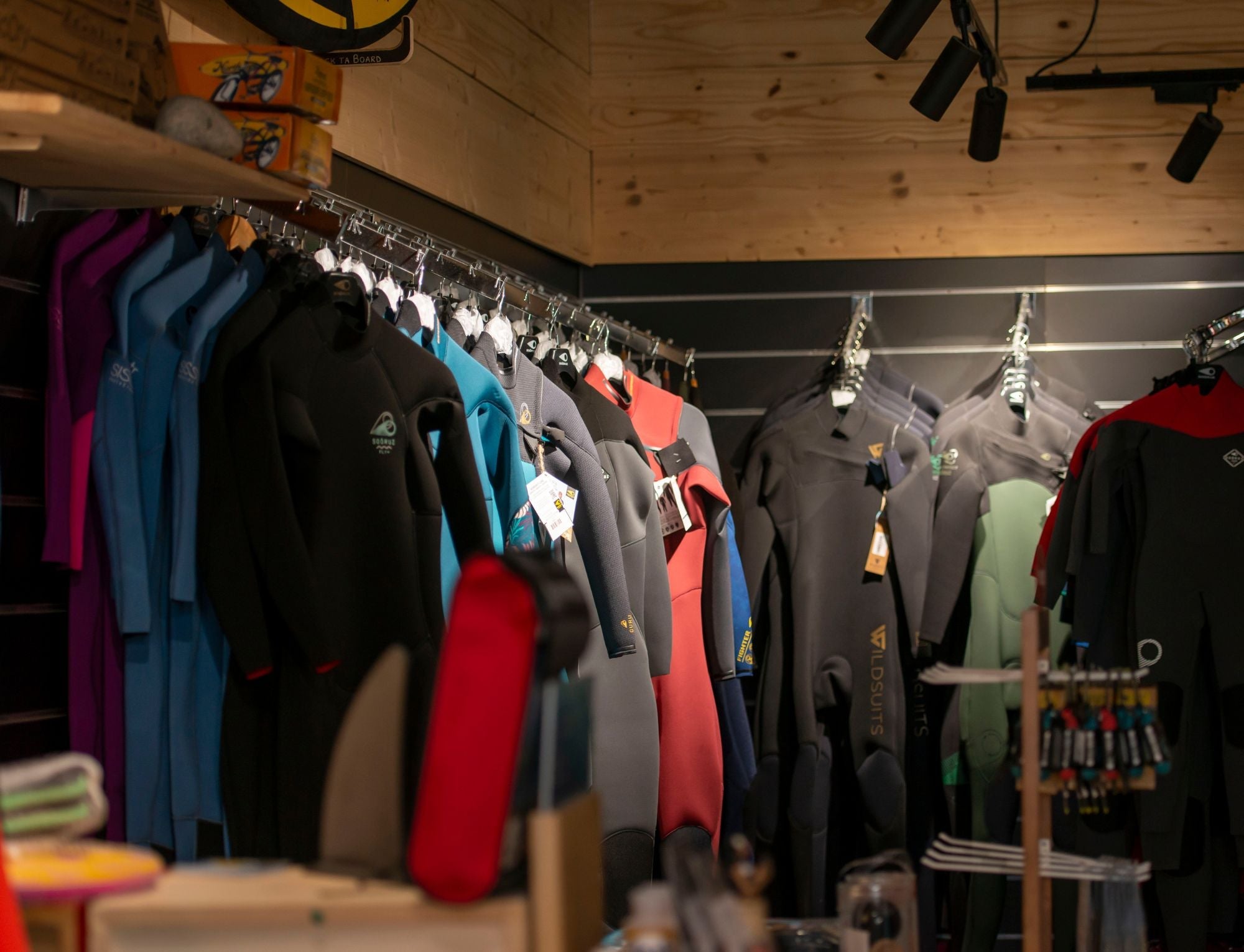Choosing your surf shoes: the ultimate guide (2024)
Feel the waves, harness the power of the ocean, surf in complete freedom... But to fully enjoy each winter session, one essential element is often overlooked: surf boots.
More than just protection from the cold, surf boots play a crucial role in your performance and comfort. Optimal board grip, enhanced sensations, and protection from injury— choosing the right pair can transform your surfing experience.
With so many models on the market, it's easy to get lost. That's why we've created this comprehensive guide.
In this article, we'll reveal the secrets to choosing the perfect surf boots, based on your level, needs, and preferences. Size, thickness, sole type, materials... We'll review all the criteria to consider to help you find the pair that will allow you to tame the waves with style and confidence.
So, are you ready to surf with peace of mind? Dive into our guide and discover the surf shoes that will take you to new heights!
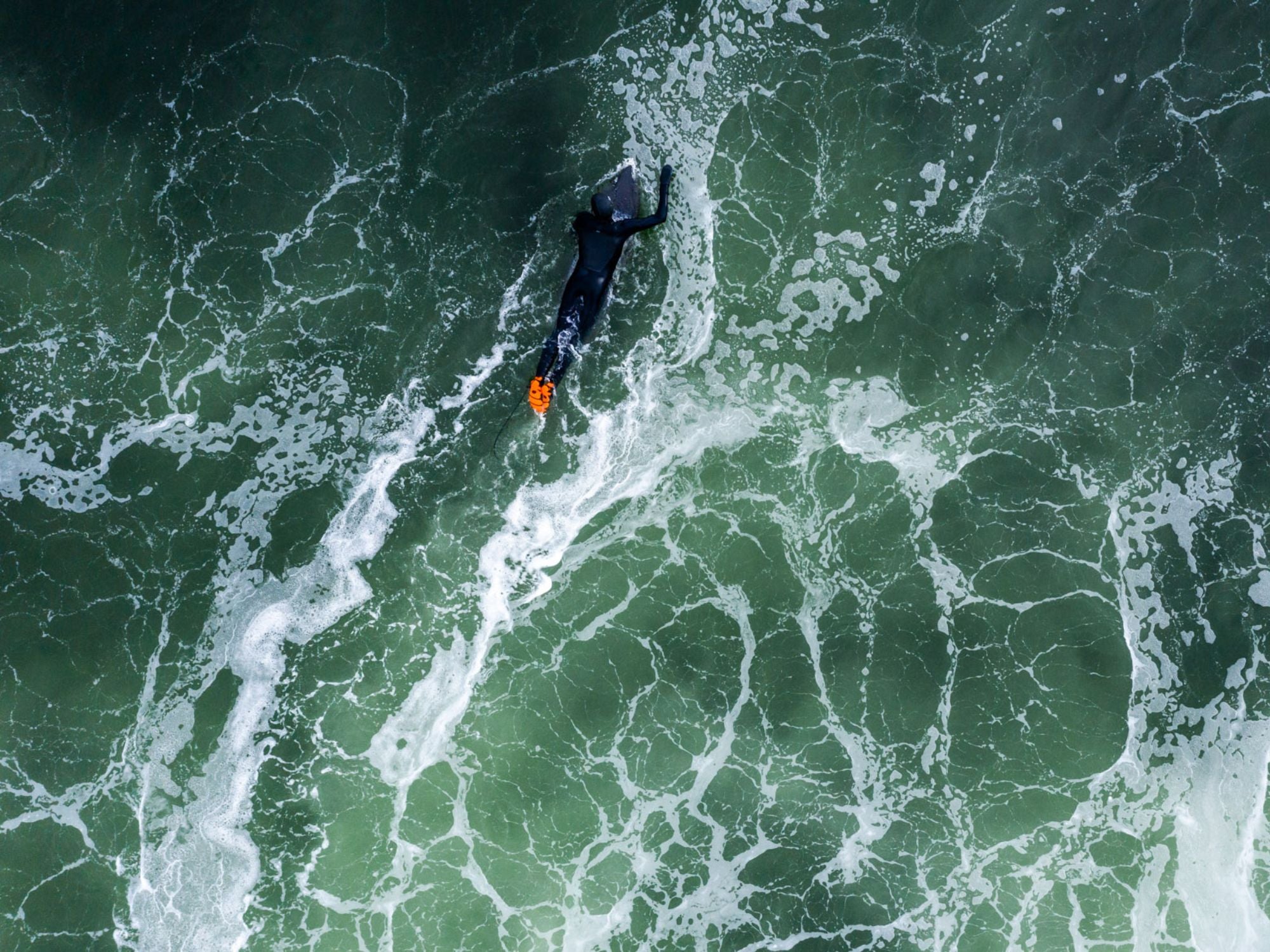
Tips for choosing the ideal size of your surf shoes:
Choosing the right size surf boot is crucial for comfort, performance, and safety. A boot that's too small can cause pain and blisters , while a boot that's too big can limit your grip on the board and put you at risk of injury.
-
Measure your foot:
- Place your foot on a piece of paper and trace around it.
- Measure the length from the heel to the tip of the longest toe.
- Convert your measurement to centimeters or inches depending on the size of slippers you wish to purchase.
- Refer to the size guide of the chosen brand:
- Each brand has its own sizing system.
- Compare your measurement to the size chart to find the correct size.
- You can contact the brand's customer service if you have any doubts.
- Consider the type of shoe:
- Neoprene booties tend to stretch slightly over time.
- Slippers without soles are generally more snug than those with soles.
- If you are between two sizes, choose the smaller size for neoprene slippers and the larger size for slippers without soles.
- Try the slippers on before you buy them:
- This is the best way to ensure the size is perfect.
- Make sure your toes touch the end of the sole without being compressed.
- The shoe should fit your foot perfectly without squeezing it.
- Take advantage of the money-back guarantee:
- Many brands offer a money-back guarantee.
- You can return the slippers if the size does not fit you.
By following these tips, you are sure to find the surf shoes that will guarantee you maximum comfort and performance.
At Zeus, we prioritize well-fitting slippers. Your feet should not move around in the slippers, and your toes should touch the end of the sole.
Take the time to try them out before using them for your next surf session.

Types of surf shoes: which shoe to choose?
There are different types of surf boots, each with its own advantages and disadvantages. Neoprene surf boots are the most commonly used, as they are soft and comfortable, and guarantee good protection against the cold. There are also soleless surf boots, which are flexible and allow for a better feel of the board, but do not provide protection. If you opt for this type of boot, we recommend the Wetty brand .
Remember to look carefully at the closing system of the slippers and the quality of the seams. If you want to stay warm and your pair of slippers will last, you can check if the seams are waterproof.
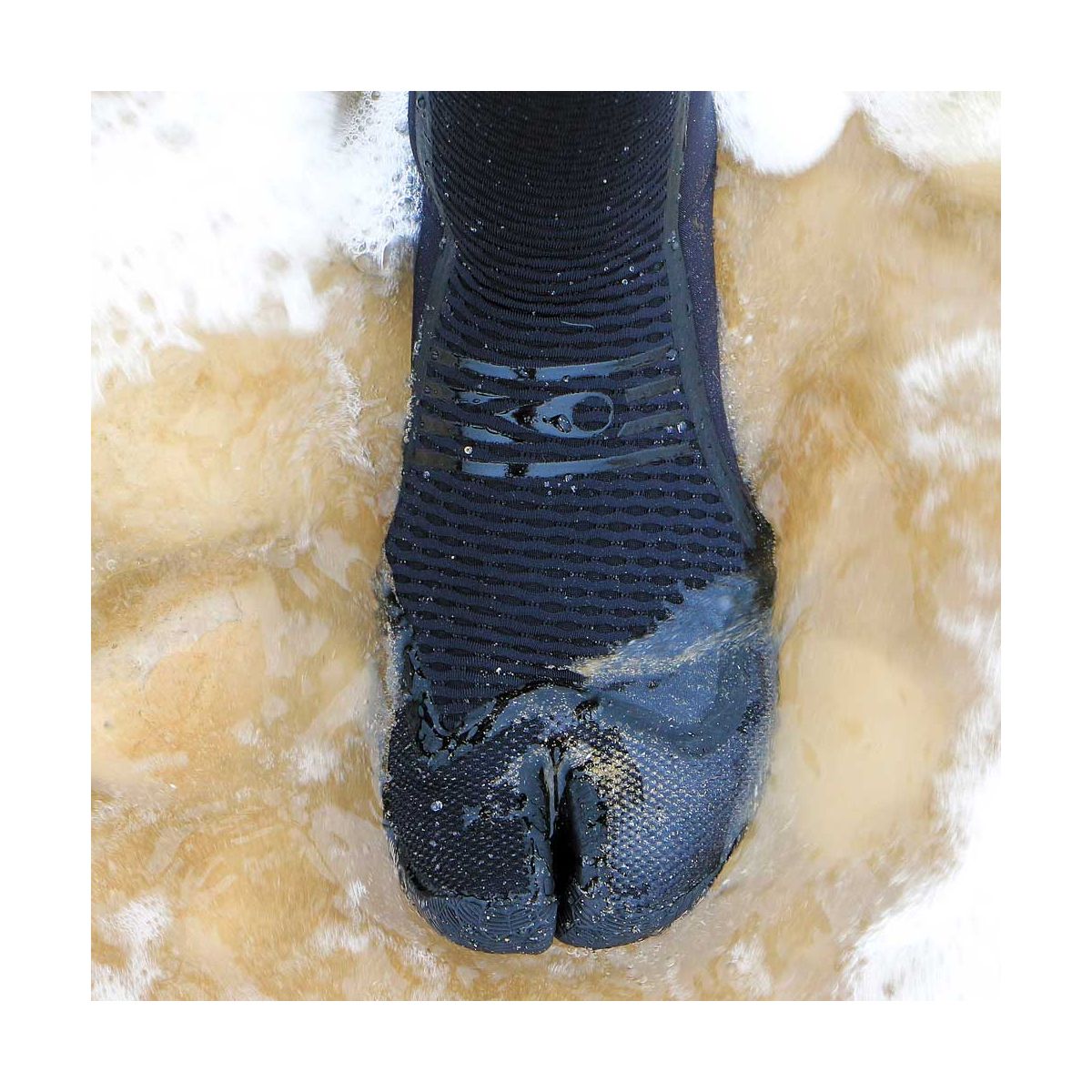
What budget for a pair of surf shoes?
Surf boots can range from €10 to €150 depending on the quality and brand. A good pair of surf boots costs at least €50, while the best pairs cost more than €100 . It's certainly a budget, but if you surf every week in winter, then it may be worth investing in a good pair . This will allow you to fully enjoy your winter surf sessions .
When to wear surf shoes?
Finally, it's important to know when to wear surf boots. If you're surfing in cold water, it's always best to wear boots to protect yourself from the cold .
There's no worse feeling than not being able to feel your feet when surfing.
Additionally, if you're surfing on a rocky or uneven bottom, booties can protect you . Finally, if you want better grip on your board , surf booties can also help you achieve that.
If you're going to warmer weather, there are reef boots that allow you to surf on rocky spots.

What thickness should surf shoes be?
Depending on the water temperature, it is important to choose the appropriate thickness of surf shoes.
- For tropical waters (20-25°C) , shoes of approximately 1-2 mm thickness are recommended.
- For warm waters ( 15-20°C), shoes about 2-3 mm thick are recommended.
- For cool water ( 10-15°C), 3-5 mm shoes are recommended.
- For very cold waters (less than 10°C), 5-7 mm shoes are recommended.
If you're worried about getting cold, we have 8mm Solite surf boots for icy waters and surf trips to polar regions.

The Best Surf Boot Brands in 2024
Solite , Wetty , Billabong , Rip Curl , Oneill & Patagonia
In 2024, the Solite booties received first prize from the American magazine Stab, in the "wetsuit & boots" category.
Where are surf boots made?
The majority of surf shoes are made in Thailand by Sheico . There are also smaller factories in Vietnam and China.
How to care for your surf boots
Washing:
- Rinse your slippers in fresh water after each use.
- Use a special soft neoprene product if necessary.
- Gently scrub the dirty areas with a soft brush .
- Rinse thoroughly with clean water.
Drying:
- Let your slippers air dry , away from direct sunlight.
- Do not tumble dry them, as this may damage them.
Our practical advice: to dry your wetsuit , your booties and your gloves, one of the best solutions on the market is the C Monsta Hanger
Storage:
- Store your slippers in a cool, dry place.
- Do not store them in a humid or warm place, as this could encourage the growth of mold.
- You can use a hanger to hang them type C Monsta.

In conclusion,
Surf boots are an important piece of surfing equipment and can improve your performance and comfort on the water. It is essential to choose the right boots based on your surfing level and personal preferences.
Size is also a crucial factor to ensure a perfect fit and maximum comfort.
Finally, surf boots are best worn to protect your feet from reefs and rocks , but also to maintain a better grip on your board . By following these tips, you can find the surf boots that best suit your surfing style and allow you to get the most out of every session.
FAQ
What is the best thickness of surf boots for me?
The thickness depends on the temperature of the water where you surf:
- Tropical waters (20-25°C): 1-2 mm
- Warm water (15-20°C): 2-3 mm
- Fresh water (10-15°C): 3-5 mm
- Very cold water (less than 10°C): 5-7 mm
- What types of surf shoes are there?
- Neoprene booties: Comfortable and warm, perfect for cold water.
- Soleless shoes: Flexible and provide better board feel, but do not protect from the cold.
- Reef boots: For surfing on rocky spots.
- What size surf shoes should I choose?
- Measure your foot and compare with the brand's size guide.
- Try on the slippers before purchasing them to ensure they fit properly.
- Choose slippers that fit well; your toes should touch the end of the sole.
- How do I care for my surf shoes?
- Rinse them with clean water after each use.
- Wash them with mild soap if necessary.
- Air dry them, away from direct sunlight.
- Store them in a cool, dry place.
- What budget for a good pair of surf shoes?
Expect to pay at least €50 for a good pair of surf shoes. The best pairs cost over €100.
- Where to buy surf shoes?
- Specialty surf shops
- Surfing equipment sales websites
- Surf Brands Online Stores
- What are the best brands of surf shoes?
Solite, Wetty, Billabong, Rip Curl, O'Neill & Patagonia
- Where are surf boots made?
The majority of surf boots are made in Thailand, but there are also factories in Vietnam and China.
- When to wear surf shoes?
- Cold waters: Protection against the cold.
- Rocky or uneven bottom: Protection against injury.
- Better grip on the board.
- What should I do if I have doubts about the size or type of slippers to choose?
- Contact the brand's customer service.
- Ask a salesperson in a specialist store for advice.
This article is part of our comprehensive guide to surfing for beginners. Discover our other resources to delve deeper into every aspect of your newfound passion.


